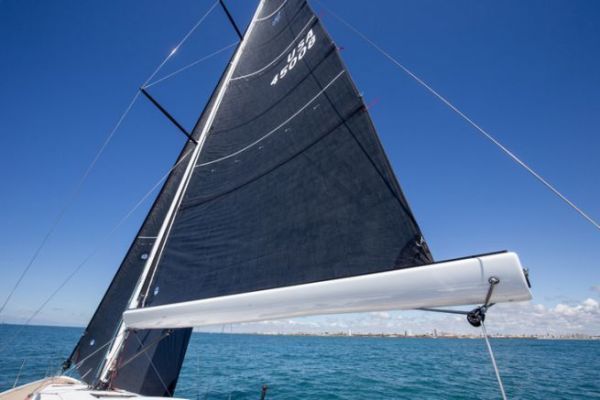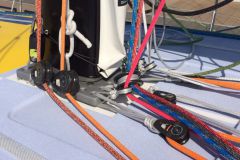Installed on a J45, we were able to test the Furlerboom in-boom furler. Moored in the port of Les Sables-d'Olonne, we discovered this sailboat from the quayside. The absence of a lazy jack, but also the absence of a sail stored in a lazy bag, give this sailboat a yacht-like appearance. No doubt about it, the Furlerboom is aesthetically pleasing.
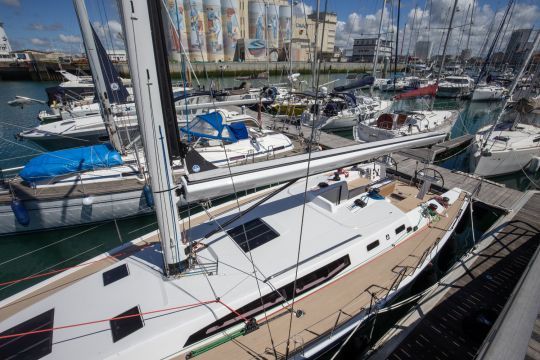
Aesthetics and technology
Its open shape is reminiscent of canoe booms, but much narrower and lighter. Painted in white lacquer with a cover that protects the sail inside, this boom gives a characteristic yacht finish.
Made in Denmark by a small family-run company, the Furlerboom fits sailboats from 40 to 70 feet. Furling the mainsail in the boom is interesting in more ways than one. Unlike furling in the mast, it avoids weight in the tops when the sail is furled, often in bad weather. It allows you to set a nice battened sail with a round leech. And in case of trouble, if the furling doesn't go well, you can always lower the mainsail in the classic way.
On a Furlerboom, the mainsail is necessarily full batten. This means it has forced battens. It's at these battens that reefs are taken, by furling the sail up to the battens. In this way, the foot always remains under tension, unlike a furling genoa, which always forms a hollow when furled. With the Furlerboom, there's no such problem.
In polyester or carbon
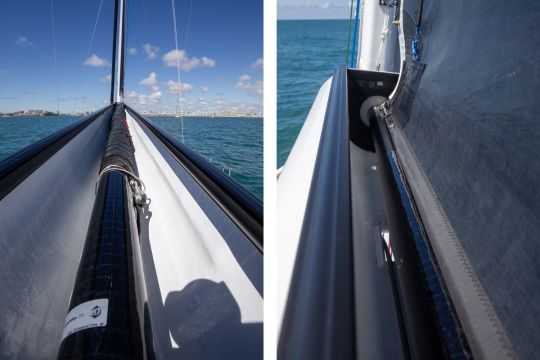
The boom consists of an outer shell in polyester composite or carbon (for a lighter version) and a carbon core in the center. Installing the boom requires no modification to the deck layout. The furling and unfurling maneuvers, i.e. an endless rope, replace the reefs in the cleats. Only the mast receives a movable part and a track to align the luff of the sail with the furler.
Simple maneuvers
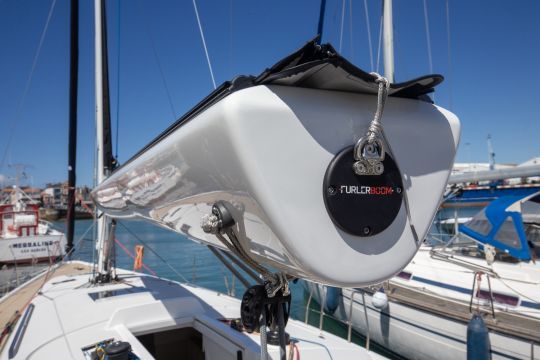
For maneuvering, a rigid vang supports the boom. Simply adjust it so that the boom forms a right angle with the mast. A marker system, which was not in place at the time of our test, can facilitate this positioning.
Simply hoist the sail with the halyard, like a conventional mainsail, while letting the furling line run with its cleat open. There's no need to manipulate the mast foot. You stay safe in the cockpit. The luff tape is automatically tensioned. Once the sail is properly tensioned, you can play with the trim in the traditional way to create a beautiful sail.

To lower the sail, the halyard is slackened while the furling line is taken up. Brake the halyard to give the sail time to roll. It's simple and effortless. Once the sail has been furled into the boom, the protective cover is closed to protect the sail from UV rays. Only the headstay protrudes from this protection, still stowed in its throat, ready to be hoisted.
More expensive, but so practical
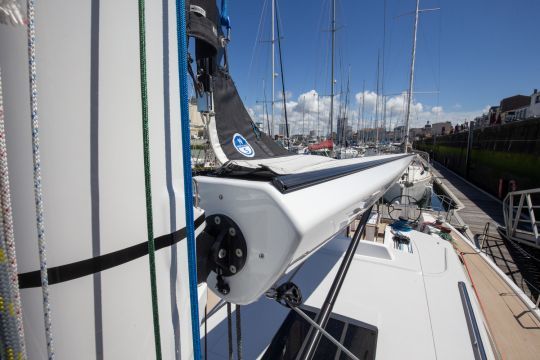
With a look and finish worthy of a yacht, and easy, safe maneuvering, the Furlerboom is a good solution when you don't want to furl your sail or reef. The only downside is the price, since the Furlerboom option on the J45 costs almost ?50,0000. But for a yacht like this, at ?700,000, this represents only 7% of the boat's price. And the bigger the boat, the lower the percentage. In France, this boom is resold by its distributor XPO. The catalog also includes electric motorized solutions for both the furler and the protection system. Practical, but also more expensive...
